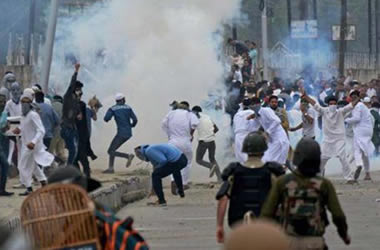The strategic environment in South Asia has its own characteristics, peculiarities, trends, and complexities. It has historically been in flux mainly because of the entrenched rivalry between two nuclear armed neighbors India and Pakistan. It has been further complicated by the interplay of extra-regional powers due to their geostrategic and geo-economic interests and more recently because of the efforts to contain China. The Indian regional and global aspirations, Afghanistan, terrorism, and host of internal religious, social, economic, political and cultural issues further compound the regional environment. Due to these complexities, the traditional concepts of strategic deterrence like those applicable in cold war don’t apply to the region. The Pulwama and the events that followed are the manifestation of the same notion.
The last year’s escalation between India and Pakistan, the causes, implications, and the lessons learnt have been discussed and debated at length. This article aims to highlight a few of the major conclusions and the lessons which could be drawn from the post-Pulwama crisis.
In February 2019, in retaliation to a terrorist incident in Pulwama, India misreading Pakistan’s response and deviating from its traditional doctrinal thinking resorted to conducting airstrike inside Pakistan, violating Pakistan’s territorial integrity, and then threatening to attack the targets across international border by missiles clearly showing her intentions to escalate. Though the attack was a clear violation of article 2 (4) of UN Charter; an act of war, it was termed as non-military strike by India to shape international opinion and to create a response dilemma for Pakistan.
The hyper and arrogant Indian media then created a war hysteria through an unprecedented fake news campaign, deceiving Indian public to a false sense of victory and projecting Pakistan as the actual instigator of aggression. As expected, the international community condemned the Pulwama incident and turned a blind eye towards the Indian aggression.
Displaying its resolve to retaliate, Pakistan Air Force struck back by projecting its ability to engage targets across LOC, shooting down a MiG 21 and a SU 30, and creating a scenario of loss of situational awareness where IAF shot down its own helicopter. The carefully planned, calibrated and resolute response by Pakistan Air Force which seriously challenged the Indian conventional myth and escalation dominance, restored the red-lines and equilibrium within 30 hours, forcing India to brandish its nuclear weapons.
That was when the international community woke up to the seriousness of the situation and rushed to deescalate. Despite the serious efforts by Pakistan to deescalate, like repatriation of the downed pilot and other diplomatic moves, India continued with its misadventures this time in sea. An Indian submarine was detected and localized in Pakistan’s maritime zone on 4th March, 2019.
The crisis reestablished the age-old efficacy of using air as the primary policy tool to achieve both national and military objectives expeditiously. However, the employment of air power during the crisis brought to fore that air will have strategic effects once employed like PAF. It definitely restored the deterrence and strategic stability. However, once unprofessionally employed without proper planning like IAF, it could yield negative effects. Indian employment of air force for supposedly a punitive surgical strike, against a nuclear armed, potent country having the resolve to respond, was definitely not a wise idea, rather, a dangerous precedent. Using the air power for political objectives and assuming that Pakistan will not respond was misperceived by Indian leadership.
The Indian threat of using surface-to-surface missiles against Pakistan’s military targets and the reported patrol by Indian submarines was fraught with grave implications. With no clearly separated conventional and nuclear delivery systems, there would always be chances of miscalculation, when employing dual-use delivery systems in such a scenario. Had Pakistan resorted to a similar move, it would have definitely been termed as an irresponsible state by the international community.
India for a long time, has been trying to explore space for a conventional conflict under a nuclear overhang or for a ‘punitive’ measure against Pakistan to assert its hegemony. First, it was cold start doctrine, which was subsequently modified into Proactive Operations strategy. The failure to operationalize these war fighting concepts during various crises led India to explore various options.
India’s post-Pulwama air action points towards new thinking of using airpower as instrument of choice to use it at any level and scale to carve notion of moral and psychological ascendency. Without deploying land forces, the air-centric approach using the technology, flexibility and responsiveness of airpower to achieve the desired effects in political domain, indicates a new trend. Pakistan’s response that caused significant damage to India’s reputation and prestige of a credible military power in the region, is likely to deter India from contemplating similar military measures in the future. However, the doctrinal shift in Indian military application coupled with its acquisition of ballistic missile defense, supersonic cruise missiles and its ambitious military space program warrant a relook at our war fighting doctrine and capabilities.
The most important of the conclusions which has come to fore is the significance of opposing perceptions in the region, which need to be clearly understood by the world for creating an enduring stability in the region. The world also need to understand that the biggest source of instability in the region is the preferential treatment meted out to India, which not only is resulting in emboldening its military might, but is also incentivizing her to act at will disregarding the international norms.
This article is written by Air Marshal Waseem ud din (Retd). He is working as Director National Security Outlook and Academic Coord at Centre for Aerospace and Security Studies. This article was first published in The News. He can be reached at [email protected]





